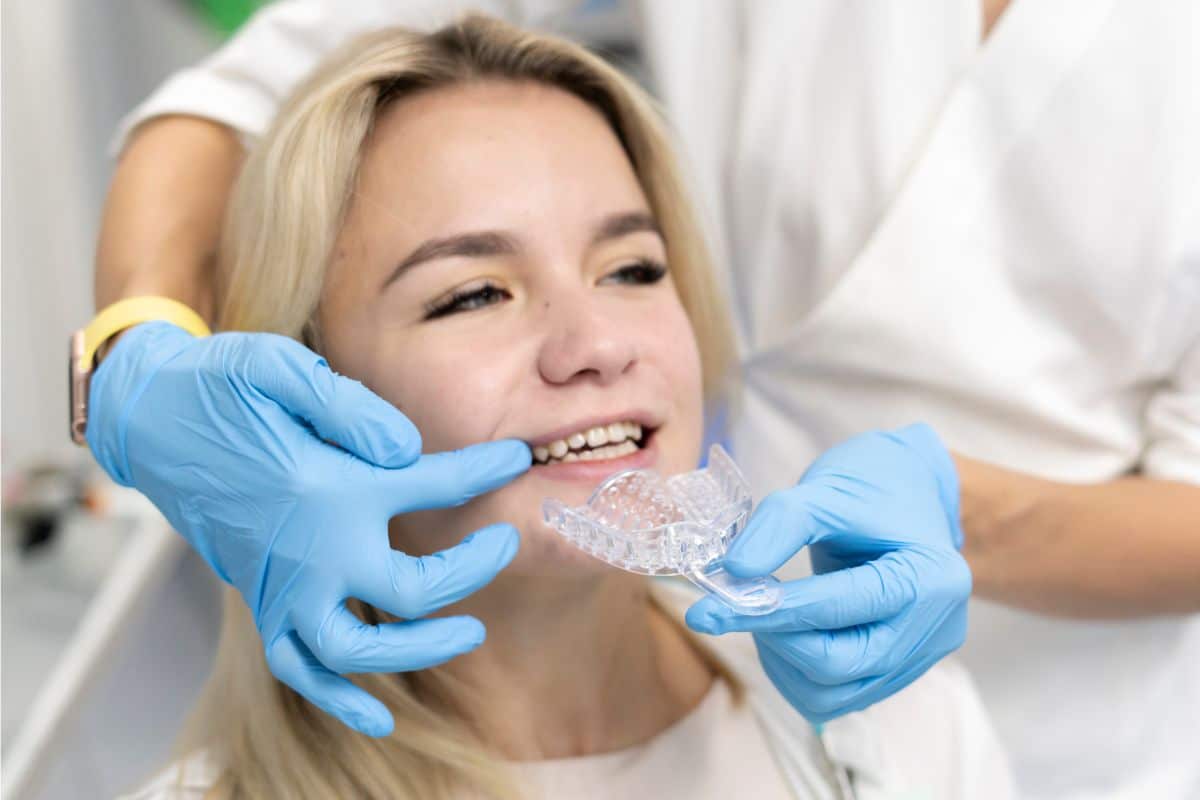Can Aligners Fix Overbite

Overbites, also known as deep bites, occur when the upper front teeth significantly overlap the lower front teeth. This condition can lead to various dental and oral health issues, including tooth wear, gum recession, and jaw pain. Aligners, such as those used in Invisalign treatment, have become a popular orthodontic solution for addressing various teeth alignment issues, including overbites. But can aligners fix overbites?
To understand how aligners can help with overbites, it’s essential to grasp the basics of how they work. Aligners are custom-made, removable trays that fit snugly over the teeth. They apply gentle pressure to guide the teeth into their correct positions over time. This process involves a series of aligners, each designed to make small adjustments to the teeth’ alignment. The key to their effectiveness lies in their precision and the ability to apply force in a controlled manner.
The Nature of Overbites
Overbites can be classified into two main types: skeletal and dental. Skeletal overbites are caused by the jaw’s position and size, while dental overbites are related to the teeth’s position. Aligners are more effective in treating dental overbites, as they can move the teeth to reduce the overlap between the upper and lower teeth. However, for skeletal overbites, orthodontic treatment might need to be combined with other interventions, such as orthognathic surgery, for significant adjustments to the jaw’s alignment.
How Aligners Address Overbites
Aligners can be an effective treatment for mild to moderate overbites, particularly those of dental origin. The process begins with a consultation with an orthodontist or dentist who specializes in aligner treatments. They assess the severity of the overbite and determine if aligners are a suitable treatment option.
- Customization: The first step involves creating a personalized treatment plan. This includes taking impressions or scans of the teeth, which are then used to create a digital model. This model helps in designing the series of aligners that will be used throughout the treatment.
- Sequential Alignment: Each aligner in the series is designed to make slight adjustments to the position of the teeth. By wearing these aligners in sequence, patients can gradually correct their overbite.
- Bite Adjustments: For overbites, the aligners work to lower the position of the upper front teeth relative to the lower front teeth. This process requires careful planning and monitoring to ensure the correct movement and alignment of the teeth.
Limitations and Considerations
While aligners can be highly effective for many dental alignment issues, there are limitations to their use, especially in more severe cases of overbite.
- Severity: For severe overbites, particularly those with a skeletal component, aligners might not be sufficient on their own. In such cases, a combination of orthodontic treatments, including braces, or even surgical interventions might be necessary.
- Patient Compliance: The success of aligner treatment depends heavily on patient compliance. Aligners must be worn for at least 22 hours a day for the treatment to be effective. Any deviation from this regimen can prolong the treatment duration or affect the outcome.
- Cost and Accessibility: Aligner treatments can be more expensive than traditional braces, and not all dental insurance plans cover them. This can be a significant barrier for some individuals.
Alternatives and Complementary Treatments
For cases where aligners are not sufficient or suitable, several alternatives and complementary treatments can be considered:
- Braces: Traditional metal braces or ceramic braces can offer more significant force application and are often used for more complex orthodontic issues, including severe overbites.
- Surgery: In cases of skeletal overbites, orthognathic surgery might be necessary to reposition the jaw and correct the bite.
- Retainers: After any orthodontic treatment, including aligners, retainers are typically used to maintain the new position of the teeth and prevent relapse.
Conclusion
Aligners can indeed be an effective solution for fixing overbites, especially those that are mild to moderate and of dental origin. However, the success of this treatment depends on various factors, including the severity of the overbite, the type of overbite (dental vs. skeletal), and patient compliance. It’s crucial for individuals considering aligner treatment for their overbite to consult with an orthodontic specialist to determine the best course of treatment for their specific condition.
Can aligners completely fix an overbite?
+Aligners can significantly improve or correct mild to moderate overbites, especially those of dental origin. However, for severe overbites, particularly those with a skeletal component, additional treatments like surgery might be necessary.
How long does it take for aligners to fix an overbite?
+The duration of the treatment with aligners to fix an overbite can vary widely, depending on the severity of the overbite and the individual's response to treatment. On average, treatment can last anywhere from 6 to 24 months.
Are aligners more expensive than traditional braces for overbite correction?
+Generally, aligner treatments can be more expensive than traditional metal braces. However, the cost can vary depending on the location, the complexity of the case, and the orthodontist or dentist providing the treatment. Insurance coverage also plays a role in the final cost.
In summary, aligners offer a viable and often preferred method for correcting overbites, given their comfort, aesthetics, and effectiveness for appropriate cases. However, the decision to use aligners should be made after a thorough consultation with an orthodontic specialist to ensure the best possible outcome for the individual’s specific dental needs.


